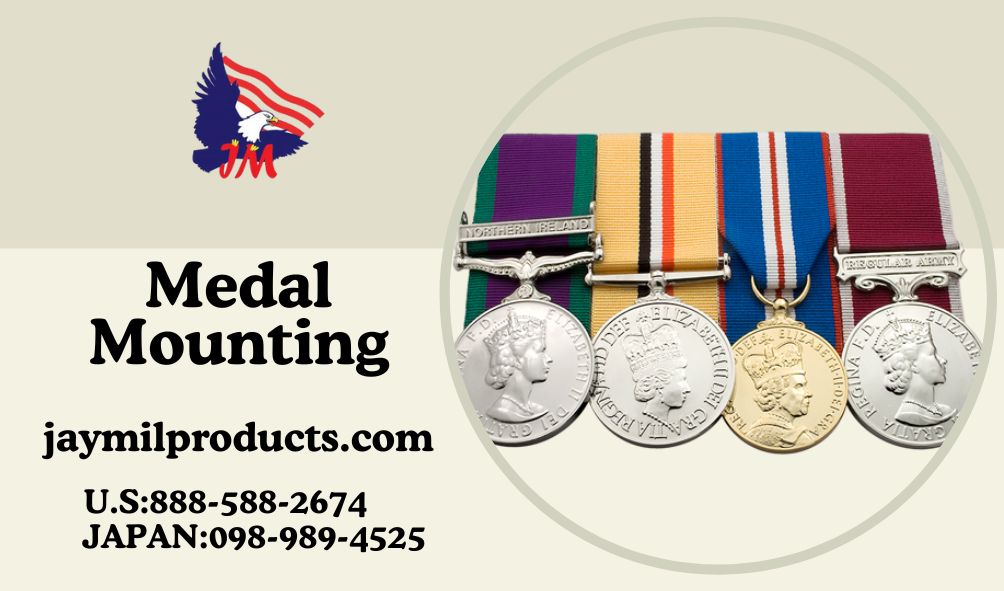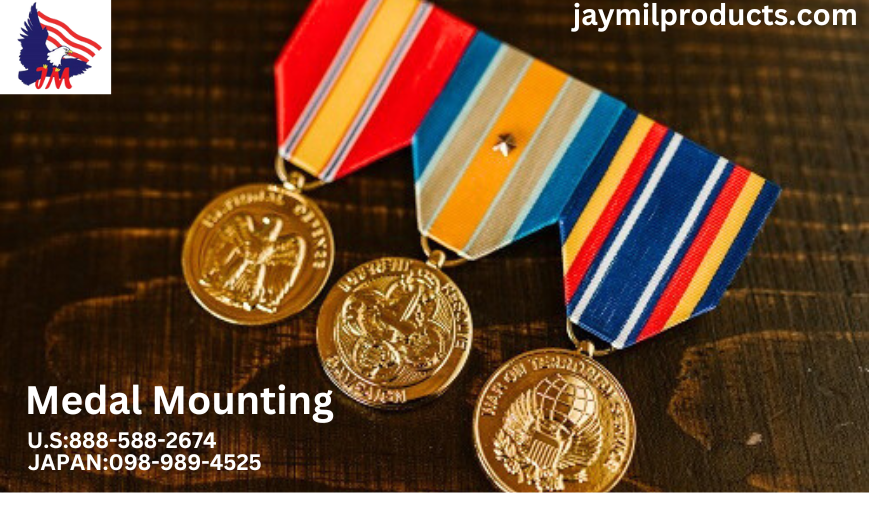Military medals hold significant value as symbols of honour, bravery, and sacrifice. They represent the recognition of service members’ exceptional contributions to their countries. Over time, the methods of Military Medal Mounting have evolved, transitioning from traditional pin-based systems to modern ribbons with magnetic system.
Join us on a journey through the history of medal mounting as we explore the transformation from pins to magnetic flags.Uncover the stories behind these mounting techniques and discover the reasons behind their development, each playing a part in preserving the legacy of military accomplishments.
Traditional Pin-Based Medal Mounting:
For many years, pin-based systems were the standard method of mounting military medals. Medals were mounted using small pins affixed to the back of each medal.These pins were then inserted into a backing material, such as a felt or velvet-covered mounting board.Ribbons corresponding to each medal were stitched onto the board, creating an organized and uniform display.
Frame Display:
Pin-mounted medals were typically showcased in frames, encased behind glass for protection.Encased behind glass, this method allows for easy wall or desktop display, ensuring the medals are preserved while enhancing their visual appeal and providing a dignified presentation of the wearer’s achievements.
Manual Mounting Process:
Military Medal Mountingusing pins required skilled craftsmanship and meticulous attention to detail.Each medal had to be individually aligned, ensuring proper spacing and orientation.This process often involved specialized medal mounting services to achieve a polished and professional result.
Modern Magnetic Ribbon Systems:
As technology advanced, magnetic ribbon systems emerged as an innovative alternative to traditional pin-based mounting. Magnetic Ribbonsutilize magnets embedded within the ribbons and a metal backing plate.The magnets securely hold the ribbons in place without the need for pins, eliminating the risk of damage to the medals or uniforms.
Magnetic systems offer greater flexibility in rearranging and organizing medals.The ribbons can be easily removed and reattached, allowing for effortless customization and changes to the display.Also, magnetic ribbon systems simplify the mounting process, allowing individuals to easily assemble and arrange their medals without professional assistance.
Unlike pin-based systems, ribbons with magnet do not require piercing the medals or uniforms.This non-intrusive attachment method helps preserve the integrity and condition of the medals, reducing the risk of damage.The metal backing plate can be securely affixed to various surfaces, such as a backing board or a display case.
Magnetic Ribbonsystems are particularly convenient for military personnel who frequently travel or wear uniforms on different occasions.The ease of removing and reattaching ribbons allows for effortless transitioning between different uniforms without compromising the medals’ display.
Conclusion
In conclusion, the journey of Military Medal Mounting from pins to magnetic ribbons reflects the ongoing quest for innovation and improvement. Both systems have their merits, and the choice lies in finding the ideal method that suits the individual’s preferences while honouring the legacy of service and sacrifice associated with these distinguished awards.
As the world progresses, Military Medal Mounting continues to evolve, adapting to the needs and preferences of service members. While traditional pin-based systems have a rich historical significance, modern magnetic ribbon systems offer practicality, versatility, and preservation benefits.
Whether one chooses the traditional elegance of pin-based mounting or embraces the convenience of MagneticRibbon, the purpose remains the same – to honour and commemorate the invaluable contributions of military personnel. The choice between these methods ultimately depends on personal preferences, accessibility, and the desire to preserve the medals.





















